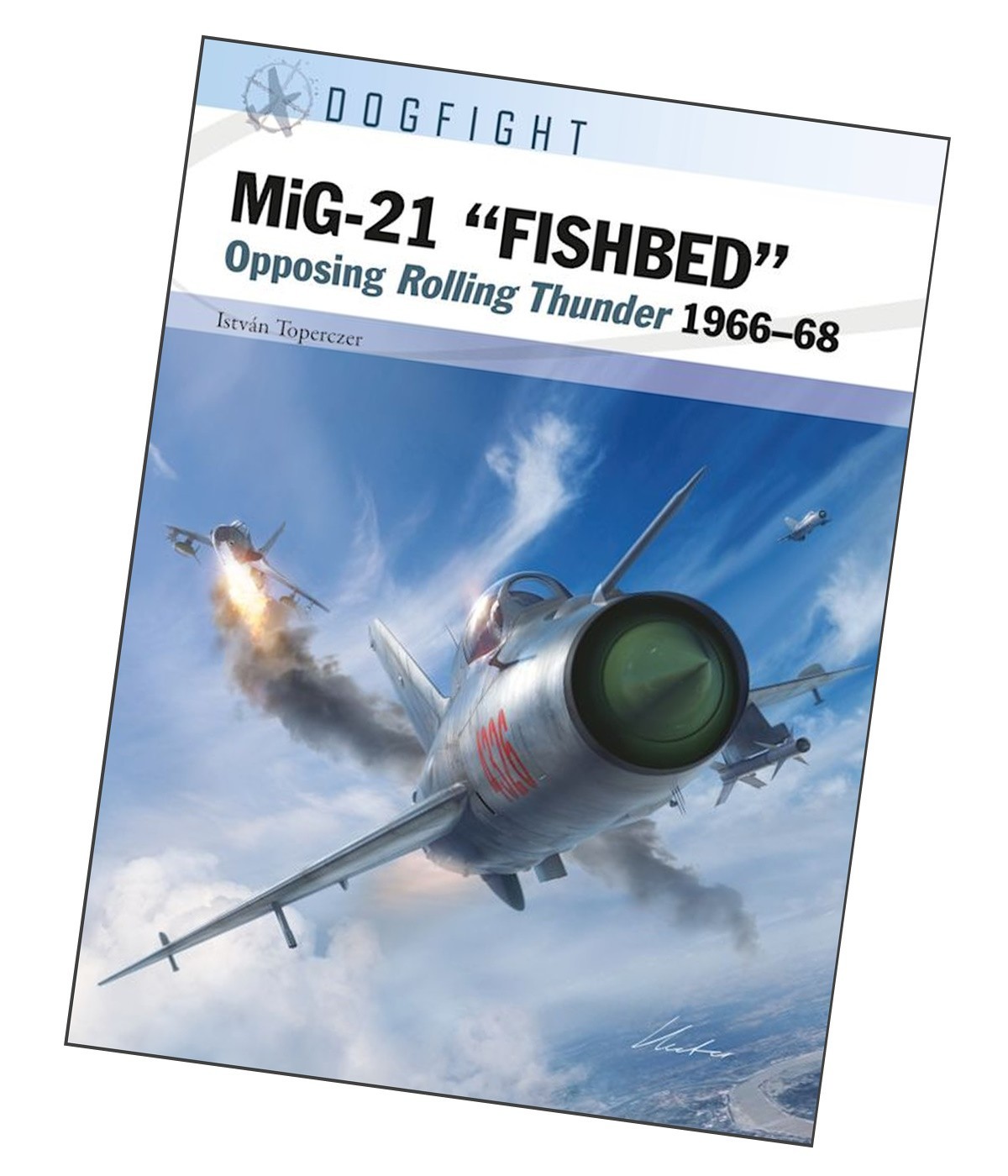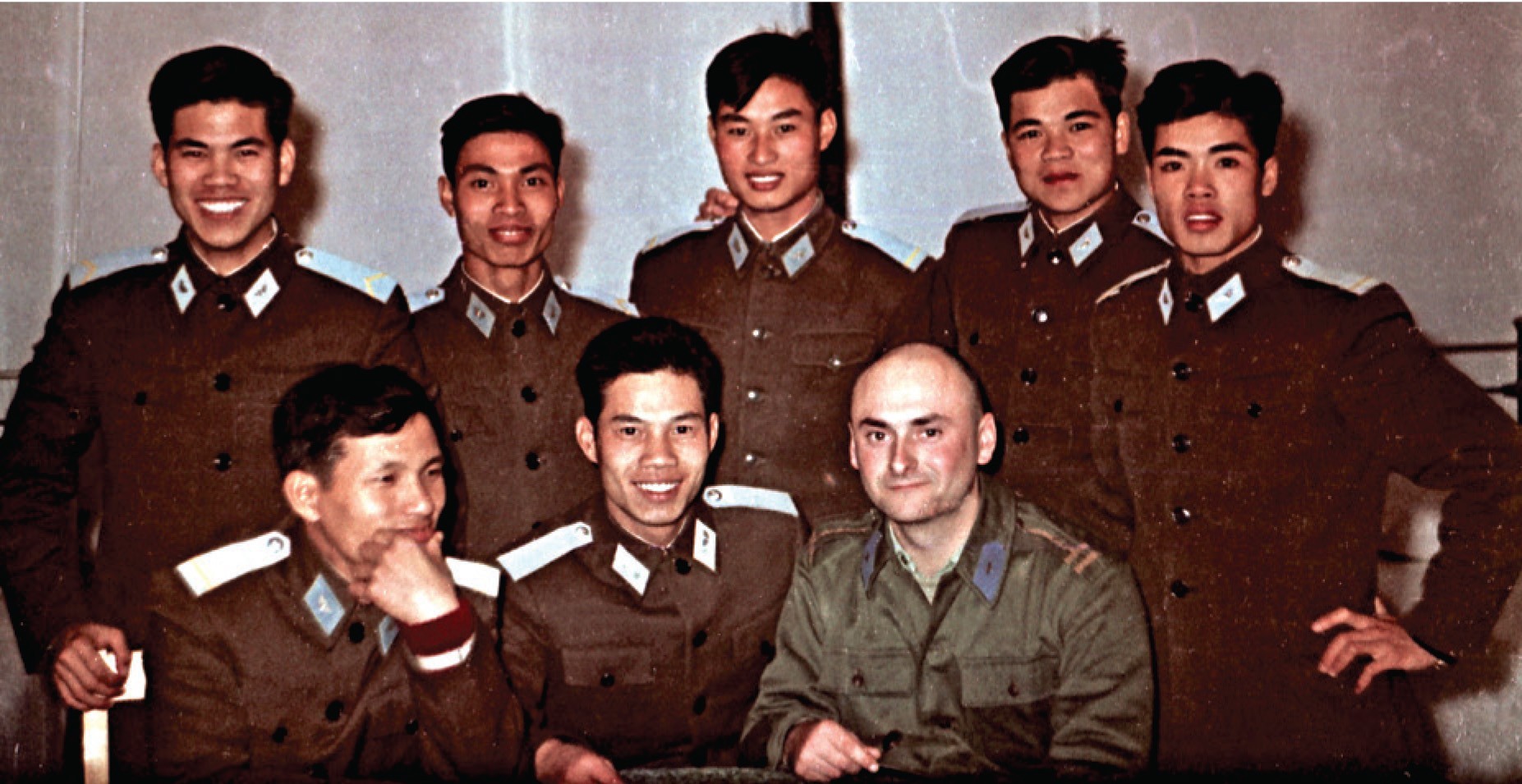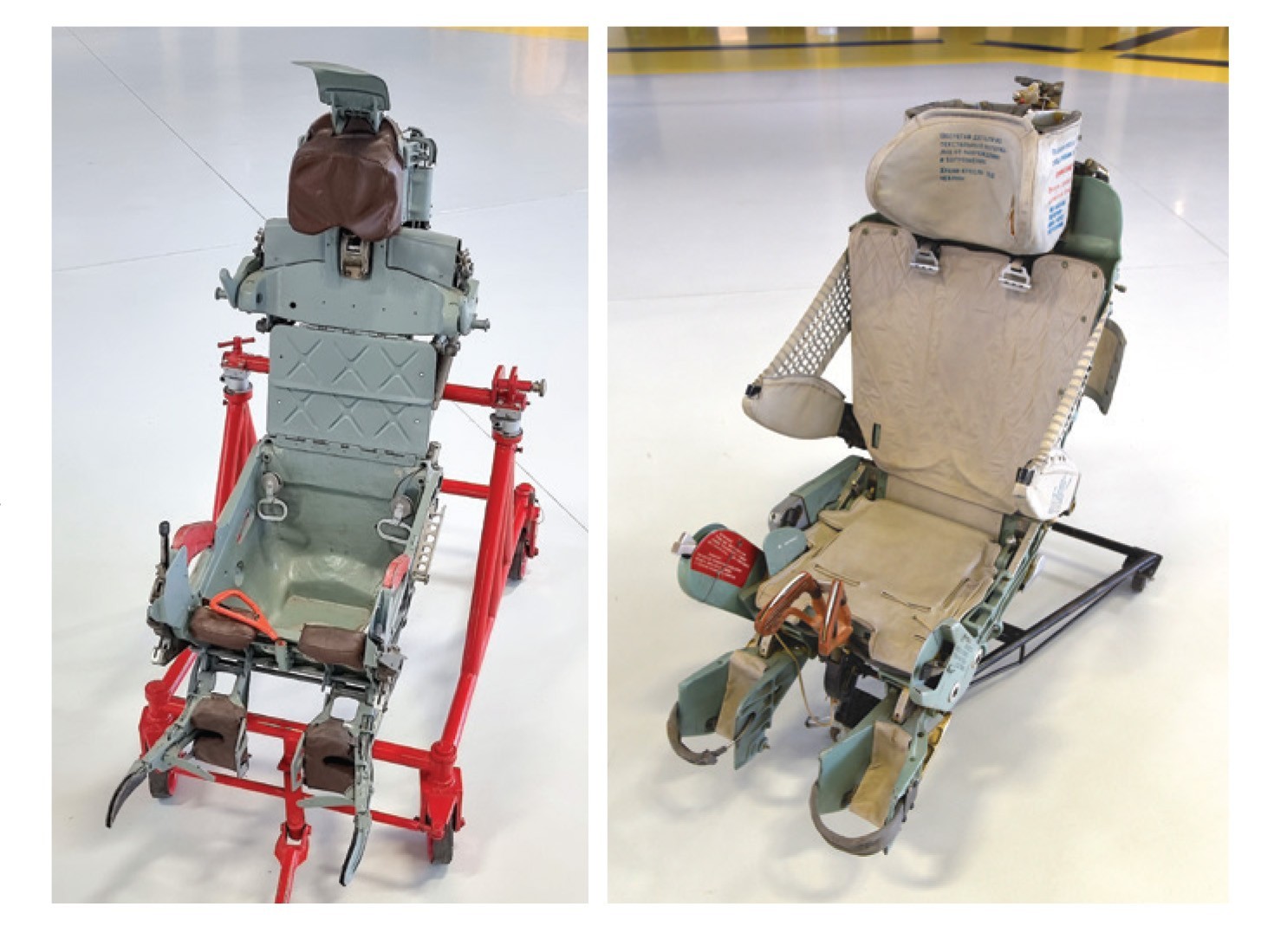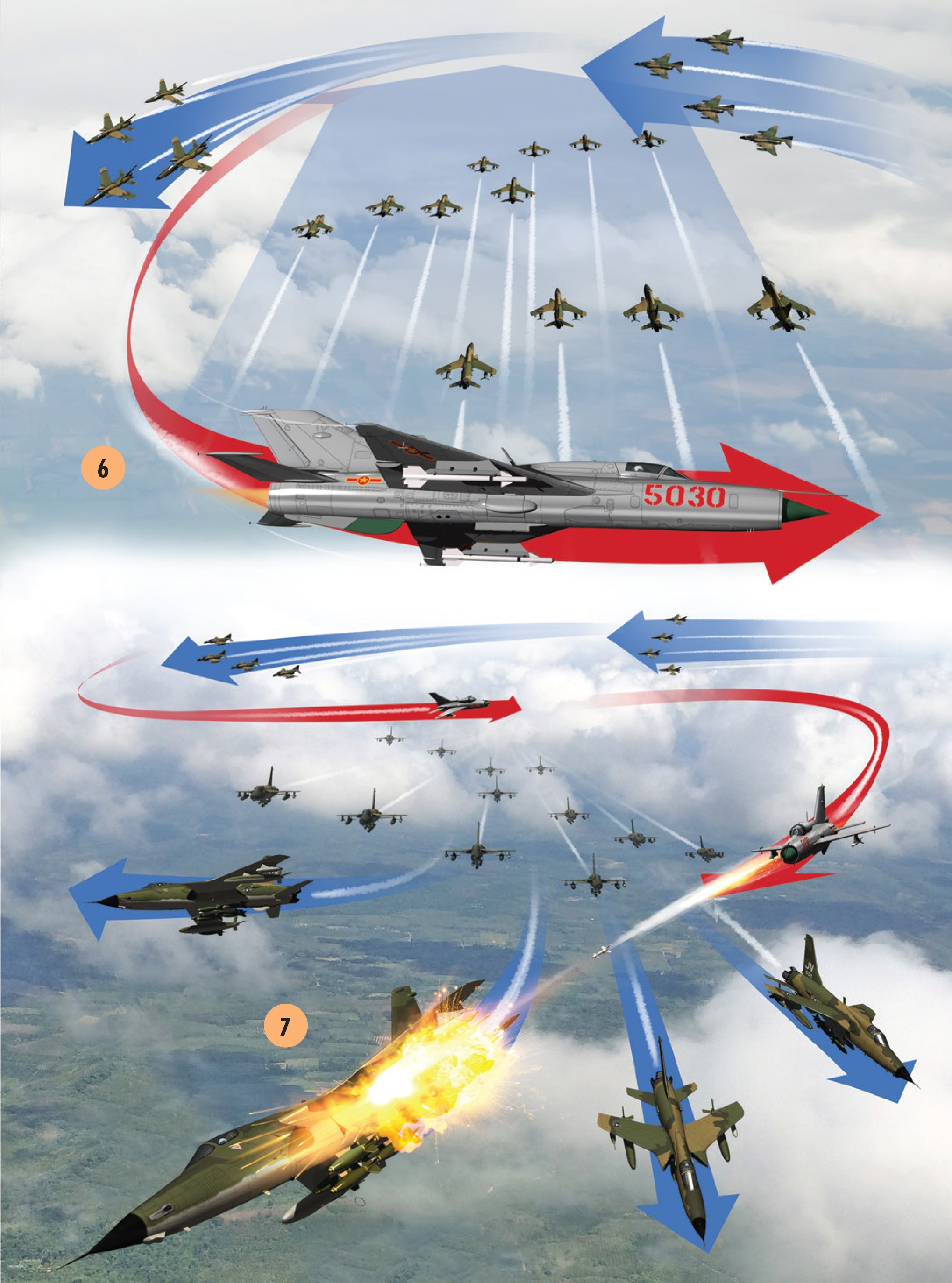
Introduction
Fairly early-on in the Vietnam War after the United States had begun sending large numbers of ground troops to take over the fighting, its leadership started looking for an off-ramp. Despite outward bravado and an inner refusal to believe a "third rate" country could defeat the victor of the Second World War, there were concerns about public resistance to escalating casualties, and the high cost of the conflict. The challenge, however, was "persuading" North Vietnam it could not win the war, or that it would suffer excessively if the US rained death and destruction down on it from the air. The belief in Washington was that America could "bomb them into the Stone Age," and North Vietnam would come to the bargaining table ready to negotiate a peace treaty. Even though the US went back and forth about what targets could be bombed, it failed to find a workable solution. For example, mining Haiphong harbor or attacking Russian and Chinese ships bringing military aid to North Vietnam was deemed too provocative. After nearly going nuclear during 1962's Cuban Missile Crisis, the United States was reluctant to risk antagonizing the Soviet Union, or bullying China into intervening with its own forces.
The belief that the US could intimidate the leadership in the North, despite any encouragement from diplomats or others with access to the Communist leadership, resulted in several largely unsuccessful bombing campaigns, the largest and most-famous of which was "Rolling Thunder" from 1966 to 1968. The campaign ended after the bloody Tet Offensive in January 1968 shocked Lyndon Johnson into suspending bombing of the North and seeking to find a way out of the quagmire through negotiation.
VPAF student pilots socializing with a Hungarian trainee inside the Soviet Union.

Osprey Publishing has released a new book about Rolling Thunder, this one from the North's perspective, written by Istvan Toperczer, the fourth book he has penned about the air war in Vietnam. A flight surgeon in the Hungarian Air Force, Toperczer (according to his Osprey bio) has made over 25 trips to Vietnam and has interviewed many of the participants in the battles. It's a valuable perspective on how a relatively inferior military was able to thwart the will of a super power.
Contents
- In Battle
- Setting the Scene
- Path to Combat
- Weapon of War
- Art of War
- Combat
- Selected Sources
R-3S "Atoll" AAMs.

The Review
The book is an excellent introduction to the effort made by the VPAF (Vietnam People's Air Force) as it struggled to fend off a much-larger, more powerful and technically more-advanced opponent. Remember that the United States was attacking both tactical and strategic targets, using fighter-bombers and high-flying B-52s. Early in the war, it looked as though the United States would overwhelm North Vietnam with the sheer weight of bombs, the number of planes and the technological sophistication of their aircraft, radar, unit coordination and technical sophistication. But the VPAF was being supplied by both the Soviet Union and China with both ancient anti-aircraft guns like the German 88mm, as well as some of the most up-to-date anti-aircraft weapons, including SA-2 surface-to-air (SAM) missiles and the MiG-21.
The North already was using MiG-17s and MiG-19s (both originals from the Soviet Union or Chinese copies). However, they were verging on obsolescence by the late 1960s. The MiG-21 was considered one of the premier fighters of the era, one designed to go toe-to-toe with America's strategic nuclear aircraft and their escorts. Additionally, the Soviet Union early-on trained North Vietnamese pilots and ground support personnel at its facilities, as well as dispatching Soviet pilots, technicians and ground crew to school the VPAF in how to use this extremely-sophisticated weapon (despite rumors to the contrary, Vietnam insists no Soviet pilots flew combat missions).
VPAF technicians load an R-3S "Atoll" air-to-air missile aboard a wing pylon of a MiG-21.

The MiG-21 was aerodynamically-superior to all but the F-8 Crusader and the F-4F Phantom II, but it was lightly-armed, and had an inferior on-board radar tracking system. Still, the VPAF pilots were quick studies, and they learned from their mistakes. Eventually the VPAF (combined with the SA-2 "SAM" surface-to-air missile) downed 2,251 American aircraft. The numbers and agent of these "kills" are disputed by both sides, even decades after the war's end. Complicating finding the truth is the US practice of listing damaged planes that made it back to base as lost to accidents, rather than as destroyed by combat, even if so badly shot-up they were scrapped. Still, suffice it to say that neither side accepts the other's numbers or attributions, and the book helps bring the reasons why into sharper focus.
And there is no disputing that the skies over Hanoi in the 1960s were dangerous and deadly for American planes and pilots.
Type SK-1 and SK-3 ejection seats.

While the book is excellent as a history of the conflict, and is larded with beautiful color plates, modelers should not expect aircraft variants and camo schemes. The subject is the campaign, its tactics and the men who flew the MiGs, not what color the planes were painted (usually the MiGs were NBM). This in no way detracts from the book's value to the modeling community, but anyone hoping for a trove of potential subjects will be disappointed.
VPAF tactics for engaging USAF Phantom IIs, the "Snake Maneuver." [Illustrators Gareth Hector & Jim Laurier]
![VPAF tactics for engaging USAF Phantom IIs, the "Snake Maneuver." [Illustrators Gareth Hector & Jim Laurier]](/upload/media/entries/2023-08/05/3533-entry-5-1691240501.jpg)
The text instead focuses on how the VPAF adapted to the challenge of engaging planes that were both technologically-advanced, and present in far-greater numbers. Unlike the MiG-17 "Fresco," the MiG-21 "Fishbed" in Vietnam had only 2 R-3S "Atoll" AAM missiles (a Russian copy of the early Sidewinder), and some even carried folding-fin rockets. The MiGs had to get in close to their target, firing despite violent evasive maneuvers. Ground control command wasn't always up to the task, and human fatigue all combined to limit the effectiveness of their interceptors.
In the end, the Vietnamese fought bravely and disrupted the American attacks and their effectiveness. Seeing the war in their eyes was worth the time spent with this book.
Part of an engagement on January 3, 1968 above Phu Tho province.

Conclusion
This is a quick read and an invaluable tool for anyone modeling the air war over North Vietnam, in this case, the most-significant air campaign of the war.
Thanks to Osprey Publishing for the review copy. Be sure to say you saw it reviewed on Aeroscale when ordering your copy.
RP-21 Sapfir on-board intercept radar.





























